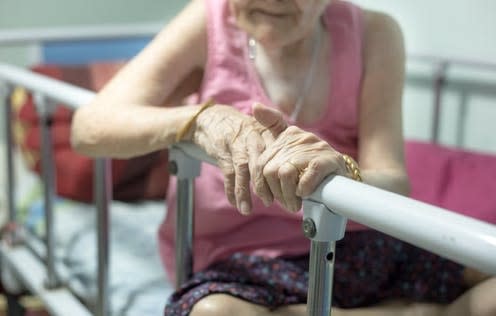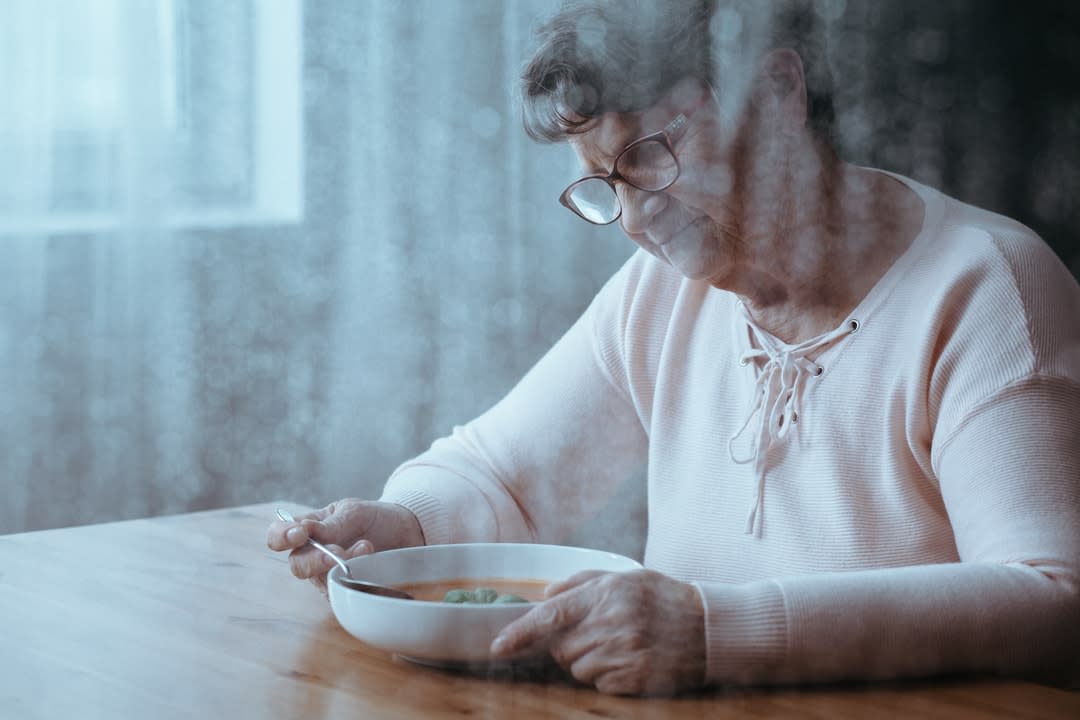
As the aged care royal commission gathers more and more information about the strain the sector is under, the drive to keep patients in their beds is becoming increasingly apparent.
Since the commission began in January this year, it's heard horror stories that have painted a disturbing picture of chronic understaffing that's led to patients being restrained, either through medication or physical restraints.
The Minister for Aged Care, Ken Wyatt, responded by announcing new regulations to curb excessive use of restraints, bringing Australia into line with other countries in Europe, the US and Great Britain.
This is a good start, but aged care providers and consumers should still be aware of the risk of pressure injuries as a consequence of using restraints in the aged care environment.

Pressure injuries, also called pressure sores or ulcers, is an area of damage to the body’s tissue due to constant pressure on the body. These are painful open wounds that significantly impact a person’s life, and often reduce a person’s health significantly. And they're dangerous, as they can lead to sepsis, infections and even cancers.
In aged care, a lack of movement and restraints increase the likelihood of developing one of these injuries.
A better understanding of pressure injuries, and how pressure injury rates can be used to target underperforming aged care facilities, is critical to improving Australia’s aged care system.
Why do pressure injuries matter in aged care?
Pressure injuries have long been used in hospitals overseas as indicators of quality of care, as well as in Australia. The risk factors for this type of injury include, but aren't limited to:
- immobility/paralysis
- circulation issues
- obesity and nutrition
- poor sensation
- long periods lying or sitting down.
In aged care, especially in what are called “high care facilities”, patients are often kept sitting in chairs or lying down. The lack of movement, coupled with the fact these facilities often have a much higher percentage of individuals with dementia, means the drive to keep patients in their beds often results in pressure injuries.
Pressure injury rates in aged care are an area of significant concern, as they're indicators of quality in the home. Aged care residents must be allowed to eat healthy meals, have appropriate bedding, have proper skin care (including moisturising), be repositioned (if immobile), be mobile when possible, and have adequate clothing.
If any of these are missing, they can cause a person to be at risk of developing pressure injuries, but are also indicative of the quality of the care at the home.
The Aged Care Act 1997, which governs aged care, requires that facilities provide:
- meals of adequate variety, quality and quantity for each care recipient, served each day at times generally acceptable to both care recipients and management, and generally consisting of three meals per day plus morning tea, afternoon tea and supper

- programs to encourage care recipients to take part in social activities that promote and protect their dignity, and to take part in community life outside the residential care service
- personal assistance, including individual attention, individual supervision, and physical assistance with moving, walking, wheelchair use, and using devices and appliances designed to aid mobility.
However, providers have significant leeway in how they enact these policies. For example, in nutrition: although aged care providers must provide healthy, quality meals to aged care residents, an ABC investigation suggested otherwise.
This leeway means that some aged care policies, designed to reduce risk and increase health, may actually harm the health of the patient. Another example would be where taking patients out on walks is universally accepted as healthy, but due to risk, aged care providers may simply not do so, or may sedate patients to stay in their beds.
Generally, pressure injuries appear to be far too high in aged care homes. A 2009 study on reducing pressure ulcer prevalence in residential aged care claimed the prevalence of pressure ulcers was as high as 43 per cent in some aged care facilities.
More recent research has highlighted that particular factors in aged care in Australia increase pressure injuries. In a study comparing two Australian aged care homes, it was found that the first home had significantly lower rates of pressure injuries, although the first home had a general greater risk of pressure injuries (due to immobility and other issues). The authors highlighted that the policies in the second home likely increased the risk of pressure injuries, including bed rails (which kept the patient in bed longer), and tray tables. They concluded that the policies in the second home (designed to reduce overall risk) likely increased the rate of pressure injuries overall.
What should be done?
Using pressure injuries as a quality indicator may aid in understanding what homes are performing to an adequate standard under the Aged Care Act, but also may lead to improvements in aged care policy. One of the submissions by the Australian College of Nursing suggested that pressure injuries should be adopted as a standard in a national database. This in turn would bring Australia in line with international standards on nursing quality. Similarly, last year a report commissioned by the Department of Health suggested that pressure injuries be used as a reporting indicator against neglect standards as well.
Against these recommendations, it’s clear that pressure injuries should be used as in indicator to nursing home quality. However, there's a problem with using pressure injuries as an indicator – the research on defining a pressure injury varies widely.
We recently published an article explaining that the way pressure injuries are detected needs to be improved. Specifically, we found that the way pressure injuries are detected and understood against a patient’s risk factors was a significant problem, and how a pressure injury is defined is largely inconsistent. Previous research has shown that financial incentives mean pressure injuries often go unnoticed or undocumented as well.
In order to use pressure injuries as a benchmarking tool, we advocate for:
- a new standard of risk assessment at admission
- systemic examination at set time points
- uniform training for staff
- clearer documentation
- trained outside observers who use pre-specified protocols
- common, shared protocol to monitor and document pressure injuries.
How can this lead to Australia raising standards in aged care in a way that leads to long-term changes?
Because the issues seen in pressure injuries often arise from the same issues highlighted as a deficit in the current aged care system (in the recent aged care commission), we argue that we need to use pressure injuries as a benchmarking tool for aged care. However, there are challenges to doing so, and therefore any aged care quality indicator will need to address the problems in pressure injury detection.
As we've highlighted, financial pressure may affect the veracity of pressure injury reporting, and therefore may affect aged care providers’ willingness to provide data. However, as an objective indicator of key issues that affect aged care, we believe we can improve aged care in Australia.





